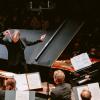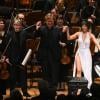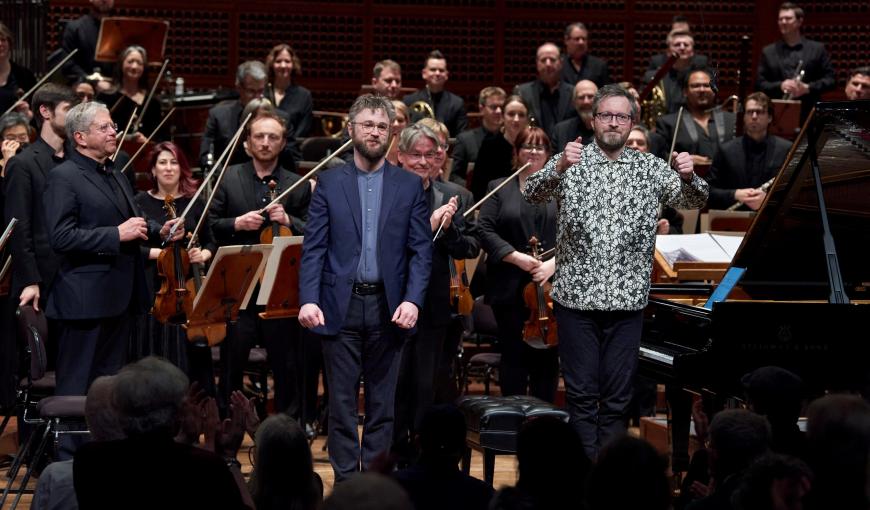
Esa-Pekka Salonen conducted the San Francisco Symphony last week in two works notable for their impressive and distinctive sonorities. They were both big and grand pieces but otherwise quite different. One was No Such Spring by Samuel Adams, an SF Symphony commission that received its world premiere on Feb. 23. I heard the first repeat performance on Saturday, Feb. 25.
Adams writes that, in evoking the season of spring in his music, he wished to depict not just its beauty and burgeoning growth but also the “brutally violent.” He cites the cracking of the ice on Thoreau’s Walden Pond and Igor Stravinsky’s The Rite of Spring — a work conspicuously quoted in Adams’s composition.
No Such Spring is functionally a piano concerto, nominally in three movements but played in an unbroken 30-minute span. The soloist was Conor Hanick, a specialist in new music who at Davies Symphony Hall found himself playing something simpler than the Pierre Boulez or Kaija Saariaho scores he’s used to performing.
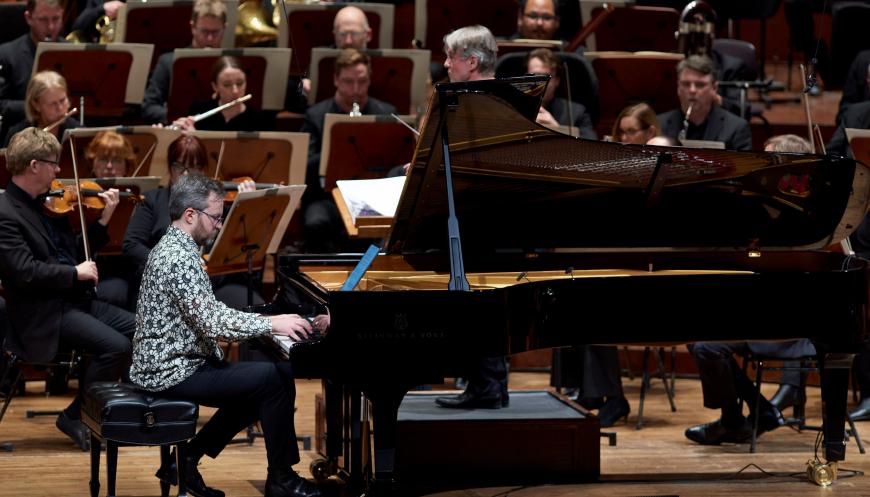
No Such Spring begins with the pianist playing a simple, gentle solo theme, one finger at a time. Gradually the orchestra joins in, different sections coming in like layers, fading in and out. Throbbing figures in the manner of the music of Adams’s father John rise and fade. The sound becomes more chaotic as the orchestral sections move in contrasting and conflicting layers. Strings throb, the brass surges, and percussion clangs. The pianist keeps up with strong figurations or by jumping around the keyboard with big dissonant chords.
Then suddenly all the huge noise and wild movement cuts off, and the pianist returns to a simple one-finger theme. And it builds up all over again. This general pattern repeats several times.
But this is just an outline; what matters is that the composer fills it out with imagination and variety. The music may sound like John Adams at times, it may quote Stravinsky or Gustav Mahler, it may even momentarily be as peacefully diatonic as the Concertino bianco by Georgs Pelēcis that KDFC radio likes to play. It always remains interesting, especially in its sound quality. Perhaps because Adams keeps fading instruments in and out, the sonority is constantly varied. The contrasting material of the various sections never becomes muddled or muddy as Adams juggles it around with verve and daring.
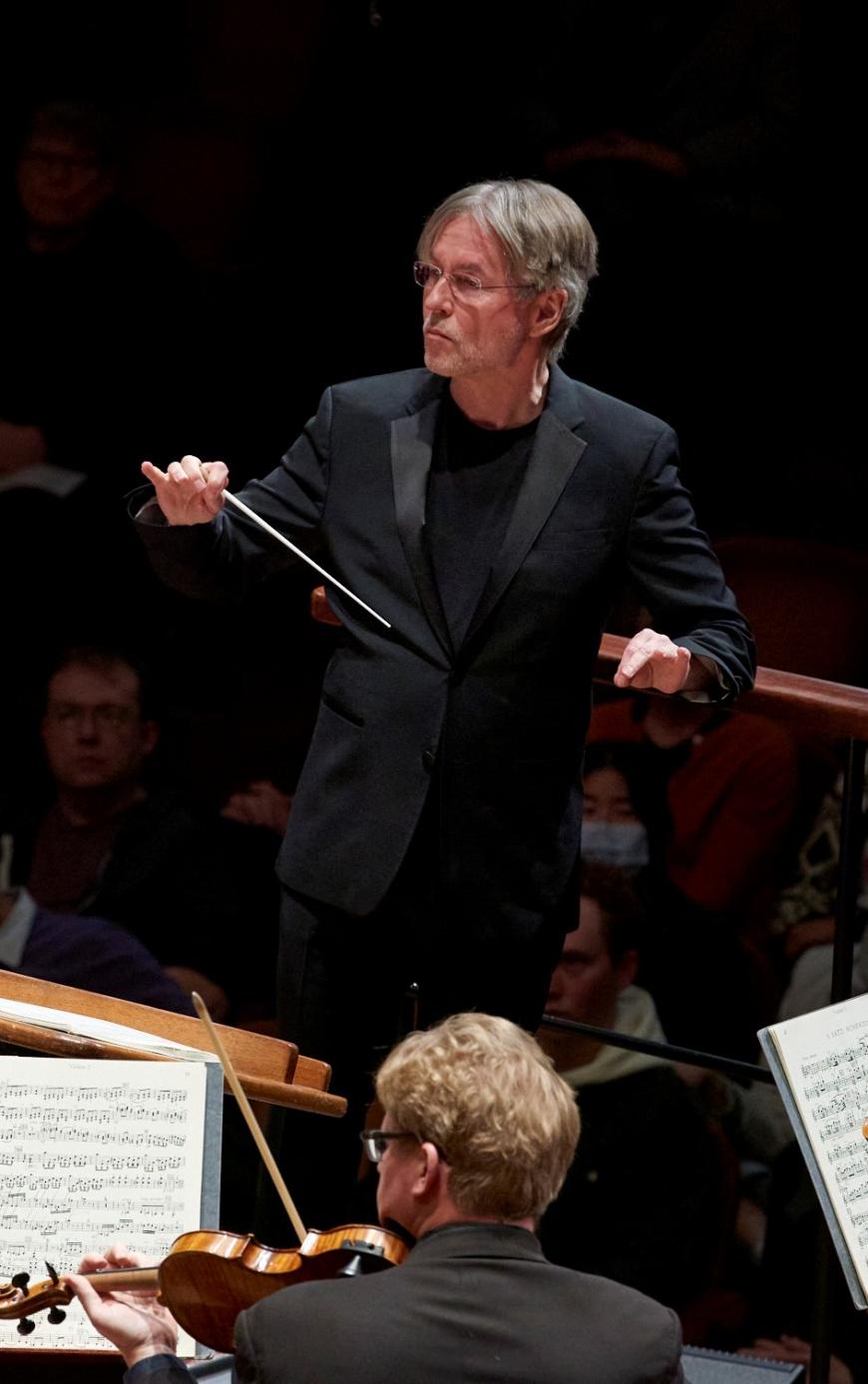
As a new piano concerto, one of several that the SF Symphony has performed recently, this composition was more successful than Magnus Lindberg’s Third Concerto and nearly as appealing as the concerto by Mason Bates. Adams writes that, during the pandemic, he’s “been rethinking what an audience expects when they come to a concert.” He is now trying “to write more directly communicative music.” This is exactly the realization that Aaron Copland came to during a previous national crisis, the Great Depression. One hopes for similarly salutary results. This concerto was a beginning.
The concert continued with the Symphony No. 6 by Anton Bruckner, the master of organ-like sonorities in orchestral music. SFS audiences may consider Bruckner’s music to be Herbert Blomstedt’s department, but Salonen is an experienced Brucknerian himself, with his own distinctive manner of interpretation.
In the outer movements, Salonen’s tendency to skim over the pauses Bruckner puts at structural joints, together with a fairly brisk speed, tended to leech some of the power out of the composition, despite the musicians giving their usual exemplary performances. But a similarly fast speed in the Scherzo successfully conveyed the brutality of the fortissimo.
A strong line and flow throughout the Adagio, with careful touches of dynamic emphasis on individual notes and topped off with an extremely delicate ending, made for a thoughtful slow section. Exaggerated and even anticipated ritardandos in all four movements also made for momentary respites in the hurtle.
As the Finale came to a close, Salonen sped up his fast tempos even more. At the very end, the triumphant brass ran rampant over everything.
This was not an awesome performance, but it was well shaped and imaginatively varied within its idiosyncratic style.


